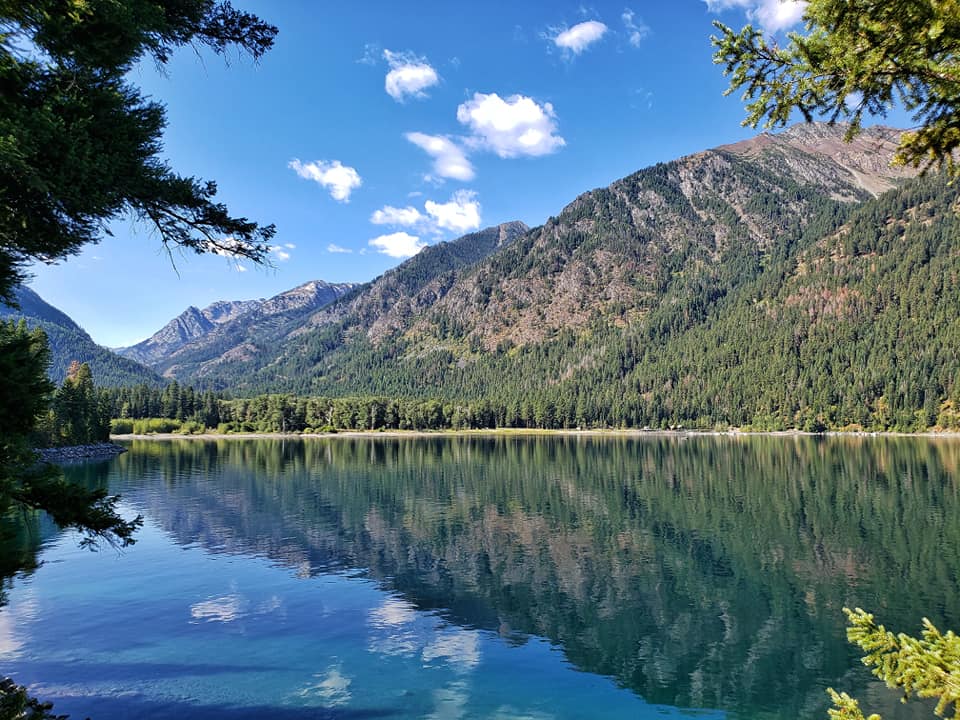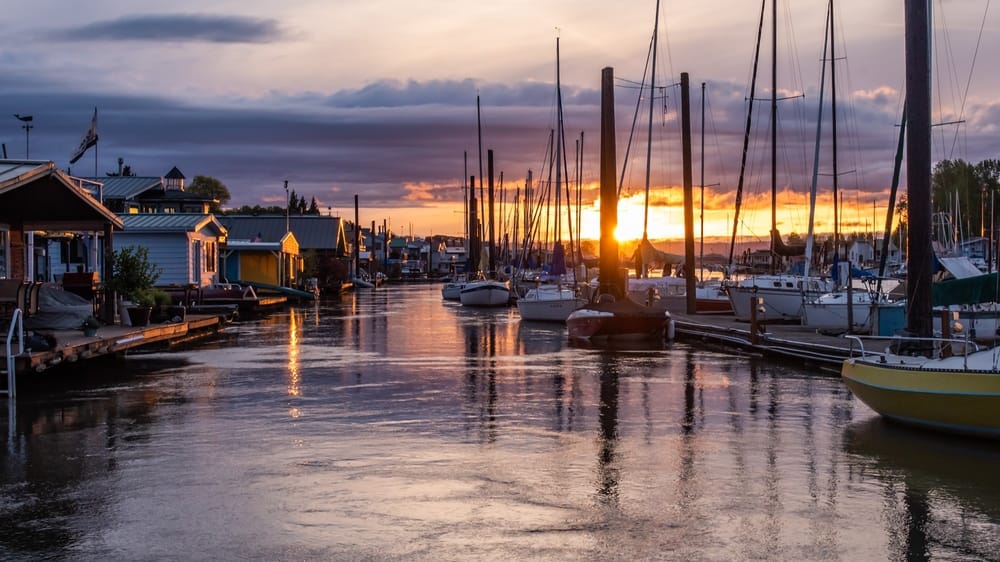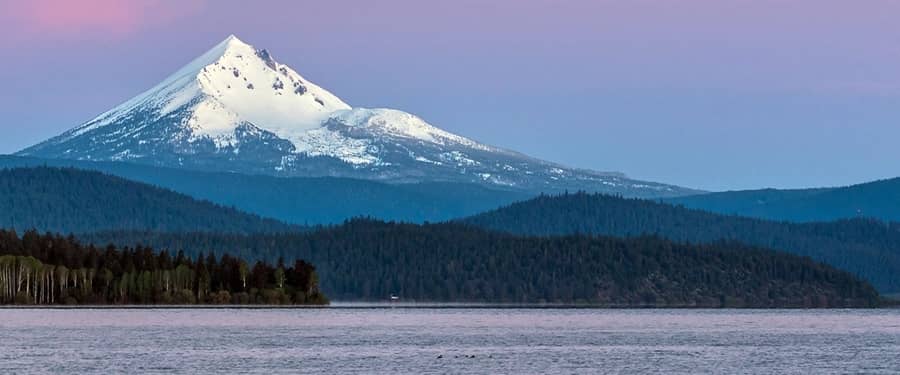Best Boating Destinations in Oregon
The state of Oregon boasts a lot of fantastic boating options that are well worth the trip. However, many people think of Washington or southeast Alaska when they want to go boating in the Pacific Northwest. In the summer, the state’s climate is a little brighter and warmer than its northern neighbors. Boating in Oregon means that you can either do coastal or freshwater sailing. Another notable difference is that many of the nicest lakes are found at elevations of 5,000 feet or higher. This can make transporting a boat more challenging, but it also means more remote and pristine boating once you get there. So, let’s see the best boating destinations in Oregon so as to help you choose one or all of them!
Prineville Reservoir
The Prineville Reservoir is a 3,000-acre reservoir formed by the Bowman Dam and the canyon. This spot is ideal for a weekend vacation, with two established campgrounds and plenty of basic sites, including boat-in sites. At this high desert park, scenic splendor, camping, and water activities are at their best. The Crooked River is formed when mountain rivers pouring out of the Ochoco Mountain Range meet. Along the 43-mile beachfront, the park includes the main day-use area and campground. Also, the Jasper Point boat launch and campground, and other drive-in and boat-in rustic campsites.
Mountain Hood Lakes
Camping, fishing, hiking, boating, kayaking, canoeing, swimming, and other activities are popular at the area’s lakes, which are both large and tiny. Lake Trillium, Timothy Lake, Frog Lake, and Clear Lake are among them. Sometimes, there’s a bit of traffic in the lakes because Mount Hood is closer to larger cities like Portland. However, not everyone who comes here is looking for a good time on the water. These lakes are popular throughout the state as key mushroom-picking grounds. So, you’ll see plenty of people walking along the shoreline with guidebooks and sacks in hand, hoping to score a bounty of tasty treats.

Crescent Lake
Crescent Lake is a 4,008-acre lake on the eastern side of the Cascade Mountains inside Deschutes National Forest. Note that the lake was formed thousands of years ago by a glacier deposit. It offers a variety of recreational opportunities, including boating, canoeing, kayaking, and swimming, as well as hiking and mountain biking around its perimeter. With an abundance of kokanee salmon, mountain whitefish, and many species of trout, the lake is a popular fishing location. It features 12 miles of sandy beaches and a forested shoreline, making it ideal for camping, picnicking, and family fun.
Crater Lake
Mount Mazama, a large volcano, erupted and fell thousands of years ago, forming Crater Lake. Rainwater and snowmelt filled the crater, eventually becoming the lake we see today. Crater Lake is the deepest lake in America and the eighth deepest lake in the world, with a depth of 1,943 feet. Crater Lake is also one of the world’s purest and cleanest lakes due to the lack of inlets. In other words, there are no sediment or mineral deposits intruding on the lake.
Though you can’t go boating everywhere due to difficult access, the lake is one of the most beautiful places on the planet and well worth the journey. The extinct volcano that formed Crater Lake gives vistas of towering mountain peaks reflected in pristine sparkling waters. The new infant volcano cone is a fascinating place to explore because it is a small islet in the middle of the water. Crater Lake is also open to fishing with the right permits. If you don’t have your own boat, watercraft rentals such as kayaks and canoes, as well as chartered boat cruises, are available.
Wallowa Lake
Wallowa Lake is a ribbon lake in the Wallowa Mountains of Oregon. It has tranquil, crystal blue waters that reflect the surrounding ice-capped peaks. This Oregon lake is another popular spot for camping, small boats, fishing, and other activities. It is near the Little Switzerland district of Oregon, which is recognized for its architectural style and annual festivals. Those who prefer to camp in style will appreciate the several cabin rentals available in this area. These are accessible year-round for both summer and winter activities. Despite its well-known beauty, Wallowa Lake’s isolated position keeps it from being overcrowded. Meaning that it’s a popular boating destination for those willing to go the extra mile. There are public ramps at both ends of the lake, as well as tie-up docks.

Hells Canyon
When it comes to size, the Grand Canyon gets all the attention, but Hells Canyon beats it in terms of depth. If you have your boat, then near the Hells Canyon Dam in Oxbow it’s the ideal site to enter. A marina, jet boat excursions, fishing boat charters, and rentals, as well as a boat launch, are all available here. However, the water is not always calm there. Because the bottom can be unexpected, it’s usually a good idea to consult a local expert before launching your boat. It is advisable to go boating if you’re an experienced sailor if the water tables are too low or high.
Paulina Lake
Paulina Lake, one of two lakes in the caldera of Newberry Crater and part of the Newberry National Volcanic Monument, is the larger of the two lakes at 620 hectares. The 1,531-acre lake is located within the Deschutes National Forest and is accessible via a 35-mile trip southeast of Bend that passes through miles of distinct and strange volcanic formations. Note that Mount Newberry is a shield volcano produced by decades of fluid eruptions, the most recent of which occurred approximately 1,300 years ago.
Paulina Lake is unique in that it is located within a volcano’s caldera. The Newberry Caldera is famous around the world for its alien-like terrain created by volcanic activity over the last 500,000 years. You will also see East Lake, which is a huge lake adjacent to Paulina Lake. The lakes are referred to as twin crater lakes. Paulina Lake’s main inflow comes from East Lake, snowmelt, and rain, and it sits at a remarkable 6,331 feet above sea level. The fact that Paulina Lake is 250 feet deep is even more remarkable.
East Lake
This lake is a 420-hectare lake and popular leisure location located in the collapsed caldera of the Newberry National Volcanic Monument within the Deschutes National Forest. The crater’s upper of the two lakes has crystal clear waters for swimming. Boating, kayaking, canoeing, and fishing for brown trout, rainbow trout, and Atlantic salmon are just a few of the water-based activities available. The East Lake Campground, which is located at the far south end of the lake and is supplied by snowmelt and springs, has 29 campsites, a boat ramp, and a beautiful beach.
The Columbia River
There are numerous reasons to follow in Lewis and Clark’s footsteps down this enormous river that serves as the Oregon-Washington border. You will see yachts, ski boats, fishing trawlers, and sailboats along the river. This translates to a sufficient opportunity for all types of watercraft. However, there are a few things to know about the Columbia River in order to boat safely.
Firstly, several dams dot the Columbia River, requiring lock passage. The good news is that, on a lengthy passage, the lock locations are usually wonderful places to find marinas and other amenities. Also, the Columbia has a current of 1-2 knots in the larger, lower sections, but it can reach six knots in some areas due to rainfall. Keep in mind that the river usually has a countercurrent section that makes the passage manageable. It’s fine to stray toward the riverbanks in search of a more convenient route as long as you keep an eye on your depth sounders.
Moreover, winds can be very strong there, especially in the areas of the river that form a wide valley beneath the plateaued walls. Cut sandstone has a wonderful vista, but it also creates a massive wind tunnel. Sailors should be aware that from mid-September to late March, prevailing easterlies with gusts of up to 40 miles per hour prevail. And, in the spring and summer, westerlies calm down for a portion of each day, necessitating motoring.

Cascade Lakes
The Cascade Lakes are a collection of approximately 100 natural lakes that may be found along the 66-mile Cascade Lakes Scenic Byway in Central Oregon. It starts in Bend and winds its way into the mountains. Backcountry camping and hiking, as well as leisurely day trips, are the finest ways to observe the lakes. In any case, you’ll enjoy stunning vistas of Broken Top, Mount Bachelor, and South Sister lakes. Some of the lakes were formed by glacial gouging, while others by volcanic activity beneath the glacier. They provide a variety of outdoor recreational opportunities, including fishing, boating, canoeing, kayaking, swimming, water skiing, and wakeboarding.
Owyhee Lake
Owyhee Lake is Oregon’s longest reservoir at 52 miles, and the stunning environment is quite breathtaking. The colorful volcanic rock formations make this a favorite summertime destination for Oregonians seeking relief from the heat. This Oregon lake is a remote place few make an attempt to see because it is located towards the eastern border of Oregon, close to the Idaho border. The lake offers camping and boating to visitors, is ideal for anyone looking to get away from the hustle and bustle of city life.
Upper Klamath Lake
Upper Klamath Lake, with a surface size of about 25,000 hectares and a length of more than 30 miles, is Oregon’s largest significant freshwater lake. The huge lake sits 4,133 feet above sea level in south-central Oregon. It is surrounded by the gorgeous mountains and forested hills of the state’s Southern tourist zone. It also includes the Klamath Basin National Wildlife Refuge Complex in the north and it is nestled in the Klamath Basin. The Upper Klamath National Animal Refuge, which has been safeguarding the marshes and waters of Klamath Lake for the past 90 years. The lake is a popular site for boating, fishing, and paddling, as well as wildlife watching.

Detroit Lake
Detroit Lake, named for the nearby city, is Oregon’s second-deepest lake, reaching a depth of 440 feet. This lake is a reservoir that holds water for Salem and the surrounding areas. The goal of this lake, which is managed by the US Forest Service, is to assure flood control, water conservation, and plenty of recreational options. Swimming, year-round fishing, boating, paddleboarding, and kayaking are all popular activities at Detroit Lake. The lake stretches 9 miles and contains 3,500 acres, making it one of Oregon’s largest lakes. It’s a popular camping destination, and the 300 campsite spaces tend to sell out quickly throughout the summer. So, if you want to book a spot you should do it well in advance.
